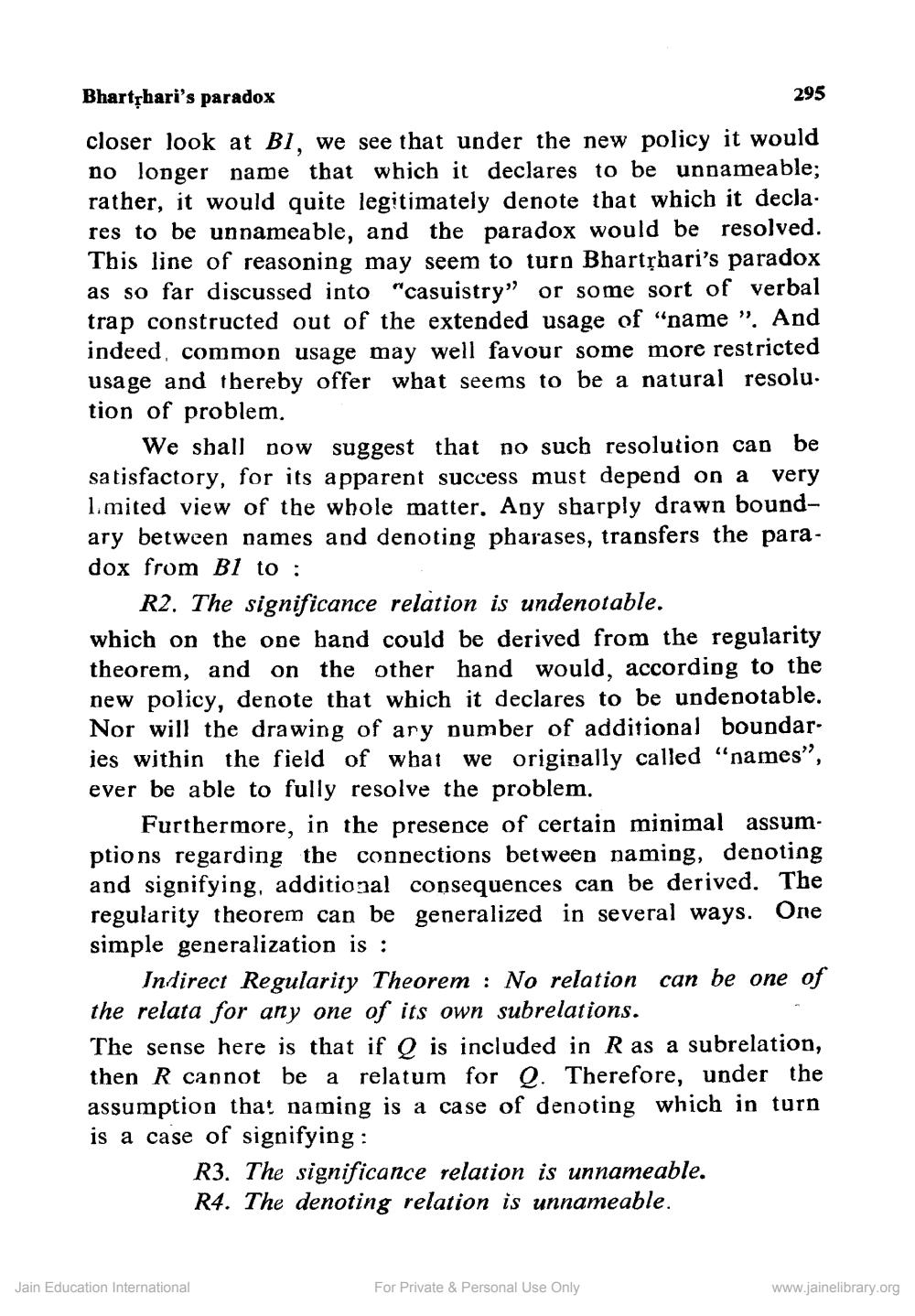________________
Bharthari's paradox
closer look at BI, we see that under the new policy it would no longer name that which it declares to be unnameable; rather, it would quite legitimately denote that which it decla. res to be unnameable, and the paradox would be resolved. This line of reasoning may seem to turn Bhartṛhari's paradox as so far discussed into "casuistry" or some sort of verbal trap constructed out of the extended usage of "name". And indeed, common usage may well favour some more restricted usage and thereby offer what seems to be a natural resolu tion of problem.
We shall now suggest that no such resolution can be satisfactory, for its apparent success must depend on a very 1.mited view of the whole matter. Any sharply drawn boundary between names and denoting pharases, transfers the paradox from B1 to
295
R2. The significance relation is undenotable.
which on the one hand could be derived from the regularity theorem, and on the other hand would, according to the new policy, denote that which it declares to be undenotable. Nor will the drawing of ary number of additional boundar ies within the field of what we originally called "names", ever be able to fully resolve the problem.
Furthermore, in the presence of certain minimal assumptions regarding the connections between naming, denoting and signifying, additional consequences can be derived. The regularity theorem can be generalized in several ways. One simple generalization is :
Indirect Regularity Theorem: No relation can be one of the relata for any one of its own subrelations.
The sense here is that if Q is included in R as a subrelation, then R cannot be a relatum for Q. Therefore, under the assumption that naming is a case of denoting which in turn is a case of signifying:
Jain Education International
R3. The significance relation is unnameable. R4. The denoting relation is unnameable.
For Private & Personal Use Only
www.jainelibrary.org




